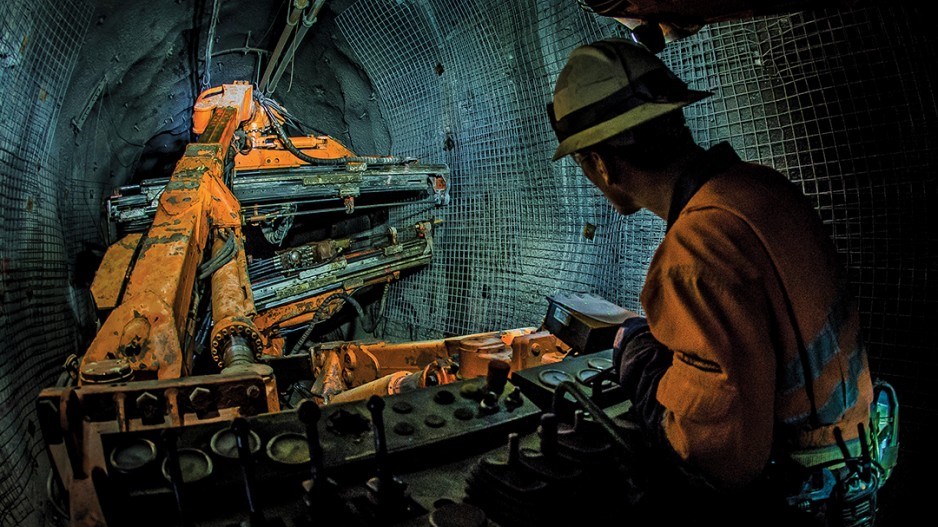When you visit a mining company’s website and click on “projects,” you’ll usually see at least one operating mine and several exploration and discovery projects featured.
Under the “projects” menu for Turquoise Hill Resources (TSX, NYSE, Nasdaq:TRQ), there is a single asset – Oyu Tolgoi.
But what an asset.
In terms of sheer scale and ore quality, the Oyu Tolgoi (which means “turquoise hill” in Mongolian) is expected to be the world’s third-largest copper mine when it reaches peak production, and has an expected mine life of close to a century. Which explains why Turquoise Hill has no other exploration projects in its pipeline.
“If I have the best undeveloped copper project in the world, I don’t necessarily want to go and develop a project – like we’ve been offered in Peru – that’s one-fourth the grade,” said Turquoise Hill CEO Jeffery Tygesen. “Oyu Tolgoi is a Tier 1 asset, and they come by about every 20 to 25 years.”
The massive Oyu Tolgoi copper-gold mine is situated in Mongolia; the man responsible for making it a reality, Robert Friedland, is an American who lives in Singapore; and the majority shareholder of Turquoise Hill, Rio Tinto PLC (NYSE:RTP), is a multinational mining company headquartered in the U.K. But the Oyu Tolgoi is very much a Vancouver mining success story.
The company is still headquartered in Vancouver even though Rio Tinto owns 50% of the company. That’s largely a legacy of Turquoise Hill having been spun out of Friedland’s Ivanhoe Mines (TSX:IVN), which was and still is based here.
Turquoise Hill’s growth since 2012 has earned it fifth place in Business in Vancouver’s list of the 100 fastest-growing companies in B.C. With a market cap of $8 billion, Turquoise Hill is B.C.’s fifth-largest mining company.
The company’s revenue grew 1,943% in four years, from $78 million in 2012 to $1.6 billion in 2016, and its head count has swelled, contracted and swelled again, with the construction phases of an open-pit mine followed by the construction, now underway, of an underground mine.
At the end of 2012, the company employed 4,069 people, a number that dropped to 2,530 in 2016 and hit 6,200 by the end of June 2017.
Almost all of those workers are in Mongolia. The company’s Vancouver head-office staff numbers only about half a dozen.
The mine’s estimated copper reserves are 3.4 billion tonnes – and it’s not just high-grade copper coming out of the ground. Rick Rule, president of Sprott U.S. Holdings Inc., has called the Oyu Tolgoi “a very large gold producer in drag” because it is primarily a copper mine that also has a lot of gold.
In 2016, copper production was 201,000 tonnes, and gold production was 300,000 ounces. The anticipated peak production is 622,000 tonnes of copper and 650,000 ounces of gold. To put that in perspective, the largest open-pit copper mine in Canada – the Highland Valley mine near Princeton, B.C. – produced 152,000 tonnes of copper and molybdenum in 2015.
Oyu Tolgoi not only has high grades of copper and gold, but is also just 80 kilometres from the border with China, which accounts for 50% of global copper consumption.
The property was discovered in the early 1990s, when Mongolia had just shaken off communism and moved to a market economy. Friedland acquired it in 2001, and Rio Tinto became a major partner.
In 2012, Rio Tinto raised its stake to 50%, and Turquoise Hill was hived off from Ivanhoe with the express purpose of building and operating the Oyu Tolgoi mine. Friedland is no longer involved in the company but remains one of the top 10 shareholders.
Rio Tinto has no direct ownership in Oyu Tolgoi. It owns 50.8% of Turquoise Hill. Turquoise Hill owns 66% of the Oyu Tolgoi mine, and the Mongolian government owns 34%.
The company spent $6.2 billion on the first phase of the project, building the open-pit mine, concentrator and associated infrastructure.
“Backing up to construction, when we started, there was nothing in the south Gobi,” Tygesen said. “We had to build the infrastructure. There was no paved road to the border.”
The open-pit mine went into production in 2013. Last year, work began on the mine’s $5.3 billion second phase. The new underground mine is slated for commissioning in 2020 and full production in early 2027.
“When we get to 2025, Oyu Tolgoi will be the third-largest copper mine in the world,” Tygesen said.




